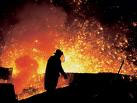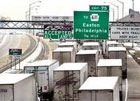| |
|
| |
|
 |
Supply
Chain by the Numbers |
| |
|
| |
- March 1, 2018 -
|
| |
|
| |
|
| |
|
| |
What will Happen as US Puts Big Tariffs on Steel Imports; UPS and Teamsters Starting PR Battle on New Contract Negotiations; Amazon Paying Big Bucks for Smart Doorbell Technology; Great Times for Truckers |
| |
|
| |
| |
| |
25% |
 |
Update: The Trump administration has confirmed 25% quotas on imported steel and 10% on aluminum. Original: That is the recommended tariff on imports of steel from China and other countries coming into the US, made in early February by the Commerce Department. This week, president Trump said he in general supports the tariff. This is a tricky issue indeed. Such a move on imports would certainly be well received in steel making states such as Pennsylvania and Ohio. But the move could start a trade war with China and perhaps other countries that would hurt farmers and producers of other goods. (SCDigest will note, however, that China already lays heavy duties on many US imports, such as 25% on cars coming into the country). A Mexican official this week said the country will place retaliatory tariffs on US goods if President Donald Trump includes it on a list of nations that would face steel tariffs, though that would not be permissible under current NAFTA rules. What's more, the resulting rise in steel prices from the tariff would damage a wide swath of US manufacturers, from giant Boeing to hundreds of smaller firms. A Harley-Davidson spokesperson said that "In general, tariffs impact our ability to offer products at a competitive retail price to our customers in any market." Recommendations for tariffs on imported aluminum are also coming soon. Hold on to your hat…
|
|
|
| |
| |
|
|
|
That rather amazingly is what Amazon is said to be paying for smart doorbell system provider Ring, according to a report from Reuters this week. What is Amazon getting for its billion dollars? In October, Amazon introduced Key, an in-home offering that allows delivery people to drop off packages inside customers' homes through keyless entry technology. Amazon seems certain to combine its Key functionality with Ring video doorbell products to offer a more streamlined hardware and software package versus its current offering, such as using Ring cameras to ensure the safe delivery of Amazon packages at the front door. In fact, Amazon already sells Ring systems on its web site, with the text saying "Ring Video Doorbells keep the front of your house secure, allowing you to answer the door from anywhere. Add Stick Up Cams to the sides and rear of your house to watch over the rest of your property, and get the full Ring of Security around your entire home. With Ring Video Doorbells and Stick Up Cams, you'll never miss another visitor. Because with Ring, you're always home." One pundit said that "You can then wrap a retail subscription around this experience to make it easy for the consumer." Prime Home? There is also said to be an Alexa play here...
|
| |
| |
|
| |
| |
2.9% |

|
That was the rise in US truckload shipments in 2017, according to Bob Costello, chief economist of the American Trucking Associations. While that may sound like relatively modest growth, it was up from basically no growth in 2016, and the 2.6% average growth seen in 2000-2004. And in fact, Costello says these are very bullish conditions indeed, such that the trucking industry is seeing the best economic climate since deregulation in the late 1970s/early 1980s. Costello pointed out three "big buckets" and one smaller one that he said drive freight growth: consumer spending, construction, factory output, and inventory levels (the half bucket). And he said this week that for the first time during this expansion, all three of the big buckets are doing well at the same time. The inventory-to-sales ratio is also creeping up. Interestingly, while total trucking volumes in terms of shipments were up nicely last year, total miles were down – more loads but less miles. The average haul is now around 527 miles and falling, Costello says, and most fleets struggle to get 100,000 miles per tractor now. Much of that is due to changing logistic patterns as a result ecommerce, which has led to more distribution centers. |
| |
| |
|
|
|
| |
 |
 |
| |
|
|
| |